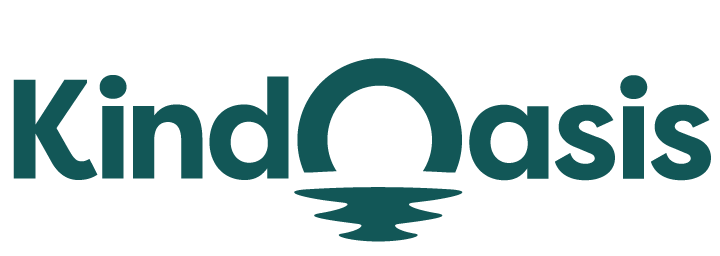How to Add a Multilingual Chatbot to Your Shopify Store
To add a multilingual AI chatbot to your Shopify store, consider using a tool like VanChat. First, integrate VanChat through the Shopify App Store. Then, configure the chatbot settings to support multiple languages, aligning them with the target demographics of your store. Customize the chatbot's responses to ensure they are culturally appropriate and accurate. Finally, test the chatbot to ensure seamless communication across different languages.
Integrating and Configuring a Multilingual Chatbot on Shopify
Integrating a multilingual AI chatbot into your Shopify store involves several key steps to ensure it effectively serves customers in diverse languages and regions. Below is a deeper analysis of the process, along with useful tips, common mistakes, and recommended tools.
Step 1: Integration
- Using VanChat: Start by adding VanChat to your Shopify store through the Shopify App Store. This tool is designed to support multilingual capabilities, making it a suitable choice for global stores.
- Tip: Ensure your Shopify store is fully up-to-date before integrating any new app. This minimizes compatibility issues and potential disruptions.
Step 2: Configuration
- Language Settings: Once installed, configure the chatbot to recognize and interact in multiple languages. Choose languages that align with your store's target demographics to enhance customer engagement.
- Cultural Relevance: Customize the AI chatbot's responses to be culturally appropriate. This entails not only translating text but also adapting expressions and references to suit different cultural contexts. Learn more about chatbot design for Shopify to ensure the best user experience.
- Tip: Use native speakers or professional translation services to ensure accuracy. Automated translations can often miss nuances and lead to misunderstandings.
Step 3: Customization
- Personalized Responses: Tailor the Shopify AI chatbot's responses to reflect your brand's tone and style. This helps maintain a consistent brand voice across different languages. Consider the AI chatbot behavior settings to fine-tune the interaction.
- Common Mistake: Avoid using overly technical language or jargon that might not translate well. Simplicity and clarity are key in effective multilingual communication.
Step 4: Testing
- Seamless Communication: Before going live, thoroughly test the chatbot to ensure it operates smoothly in each language. This includes checking for any errors in translation or functionality. Utilize test Shopify AI assistant resources to ensure everything is working correctly.
- Tip: Conduct beta testing with a small user group from each language demographic to gather feedback and make necessary adjustments.
Useful Tools
- Google Translate API: While not a replacement for professional translation, it can be a helpful tool for quick, preliminary translations during setup.
- DeepL Translator: Known for its nuanced translations, DeepL can be a valuable resource for ensuring accuracy and cultural relevance.
Common Mistakes
- Ignoring Regional Variations: Languages often have regional dialects and variations. Failing to account for these can result in communication barriers.
- Neglecting Updates: Regularly update the chatbot to incorporate any new languages you plan to support and to improve existing translations based on user feedback.
By carefully integrating, configuring, and testing a multilingual chatbot, Shopify store owners can significantly enhance customer interaction and satisfaction across global markets. For a comprehensive guide, explore ecommerce chatbot best practices.
Use Cases for Adding a Multilingual Chatbot to Your Shopify Store
Adding a multilingual chatbot to your Shopify store can significantly enhance customer experience and boost sales. Here are some popular use cases:
- 24/7 Customer Support: A multilingual chatbot can provide round-the-clock assistance in multiple languages, ensuring that international customers receive timely help, regardless of time zones.
- Product Recommendations: Use chatbots to suggest products based on customer preferences and browsing history. This personalized approach can be tailored to different languages and cultural nuances, increasing conversion rates. For more advanced tactics, consider implementing an AI product recommendation engine.
- Order Tracking and Updates: Customers can easily inquire about their order status or receive real-time updates in their preferred language, reducing the workload on your customer service team. Explore Shopify order tracking integration for seamless updates.
- Frequently Asked Questions (FAQs): Automate responses to common inquiries such as shipping details, return policies, and payment methods in multiple languages, enhancing user satisfaction and reducing repetitive queries.
- Sales Promotions and Discounts: Inform customers about current promotions or discounts in their native language, encouraging engagement and boosting sales. Utilize automatic discount delivery to streamline promotions.
Incorporating a multilingual chatbot into your Shopify store not only broadens your reach but also demonstrates a commitment to customer satisfaction across diverse markets. Popular platforms like Tidio, Gorgias, and Chatfuel offer seamless integration with Shopify, making it easy to implement and manage a multilingual chatbot.
The Impact of Multilingual Chatbots on Shopify Stores
Adding a multilingual chatbot to your Shopify store can significantly enhance customer engagement and boost sales. Here are some compelling statistics that highlight the benefits of integrating a multilingual chatbot:
- Increased Global Reach: According to a 2022 report by Common Sense Advisory, 76% of online shoppers prefer purchasing products in their native language. By offering a multilingual chatbot, you can cater to a broader audience, making your products more accessible to non-English speaking customers.
- Enhanced Customer Experience: A study by Zendesk in 2023 found that businesses with multilingual support see a 30% increase in customer satisfaction. This is because customers feel more comfortable and understood when they can communicate in their preferred language, leading to a more positive shopping experience.
- Higher Conversion Rates: Shopify reported that stores utilizing chatbots experienced a 15-30% increase in conversion rates. When these chatbots are multilingual, they can engage more effectively with international customers, guiding them through the purchasing process in their language, which can lead to higher sales.
- Reduced Cart Abandonment: Research by Baymard Institute in 2023 indicates that language barriers can contribute to cart abandonment. By implementing a multilingual chatbot, you can address customer queries in real-time, reducing confusion and hesitation that might lead to abandoned carts.
These statistics underscore the importance of integrating a multilingual chatbot into your Shopify store. By doing so, you not only enhance the shopping experience for your customers but also position your business for growth in international markets.
FAQ
What is a multilingual chatbot for Shopify?+
A multilingual chatbot for Shopify is an AI-powered assistant that can communicate with customers in multiple languages, enhancing the shopping experience and boosting sales for your Shopify store.
How do I integrate a multilingual AI chatbot into my Shopify store?+
Integrating a multilingual AI chatbot into your Shopify store involves installing a chatbot app from the Shopify App Store, configuring your language preferences, and customizing the chatbot to match your store's branding.
What are the benefits of using a multilingual chatbot on Shopify?+
Using a multilingual chatbot on Shopify can improve customer engagement, increase conversion rates, and provide 24/7 support in various languages, making your store accessible to a global audience. Discover more on AI chatbot for Shopify benefits.
Is a multilingual chatbot compatible with all Shopify themes?+
Yes, a multilingual chatbot is designed to be compatible with all Shopify themes, ensuring seamless integration and functionality across different store designs.
How can a multilingual chatbot improve my Shopify store's SEO?+
A multilingual chatbot can improve your Shopify store's SEO by increasing user engagement, reducing bounce rates, and providing content in multiple languages, which can help attract a broader audience.
Can I customize the languages my Shopify chatbot supports?+
Yes, you can customize the languages your Shopify AI chatbot supports, allowing you to tailor the chatbot to meet the specific needs of your target audience and market.
What kind of customer support can I expect with a multilingual chatbot?+
With a multilingual chatbot, you can expect 24/7 customer support, instant responses to customer inquiries, and the ability to handle multiple conversations simultaneously in different languages.
Do I need coding skills to set up a multilingual chatbot on Shopify?+
No, you do not need coding skills to set up a multilingual chatbot on Shopify. Most chatbot apps offer user-friendly interfaces and step-by-step guides to help you easily configure and launch your chatbot.




